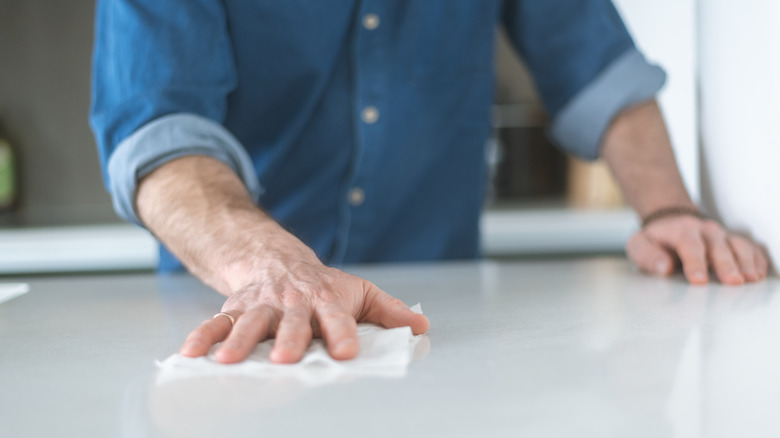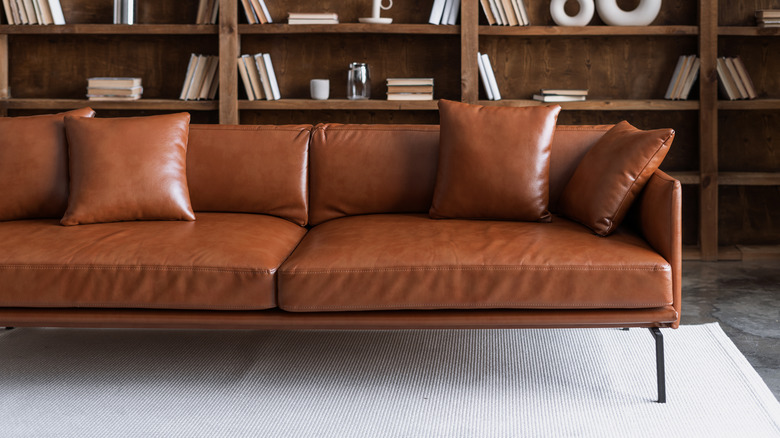Clorox Wipes And Furniture Just Don't Mix - Here's Why
The convenience of Clorox wipes might make them an attractive option for a quick clean-up, but understanding their composition and effect on different materials is crucial to preserving the integrity of your furniture. Clorox wipes are designed to disinfect. They contain active substances, including quaternary ammonium compounds, sometimes referred to as "quats," which work to eradicate bacteria and other germs. Alkyl dimethyl benzyl ammonium chloride, alkyl dimethyl ethyl benzyl ammonium chloride, isopropyl alcohol, and other additives are also included in these wipes to help with cleaning and to enhance the product's stability and usability.
Although the combination of these substances makes Clorox wipes particularly efficient in cleaning and disinfecting surfaces like plastic, stainless steel, and glass, it may have negative effects on materials like untreated wood, granite countertops, and leather furniture. The reason for this lies in the nature of these surfaces and their interaction with the potent chemical mix found in Clorox wipes.
Therefore, before embarking on a cleaning spree armed with Clorox wipes, it's important to consider the unique requirements of each surface in your home. While these wipes are an excellent tool for many cleaning tasks, they may not be the universal solution for all.
Stay away from untreated wood and granite surfaces
Untreated wood and granite surfaces have naturally porous structures. When Clorox wipes, laden with strong chemicals, are used on these surfaces, the liquid can penetrate the pores. Over time, this infiltration can result in the degradation of any protective coating on the wood and can directly damage the wood itself, disrupting its structural integrity and aesthetic appeal. The harsh chemicals can also stain untreated wood, resulting in an unsightly appearance. Similarly, continued use of Clorox wipes on granite surfaces can degrade the sealant, exposing the surface to potential stains and etching.
The ideal way to clean these surfaces is by using cleaners specifically designed for them. A gentle yet effective cleaning agent like vinegar often does the trick for untreated wood. Vinegar, diluted with water, can help remove dirt and grime without introducing harsh chemicals that could seep into the wood's porous structure and cause damage. It's best to use a soft cloth dampened with the solution to ensure you effectively clean the wood.
In the case of granite countertops, a pH-neutral stone cleaner is your best bet. Granite doesn't react well to alkaline or acidic substances, which can wear away the sealer and make the stone susceptible to stains. A pH-neutral stone cleaner is designed to clean effectively without causing such harm, while ensuring your granite countertops retain their glossy finish and are protected from potential staining. Alternatively, a simple solution containing mild soap and water can also do the trick.
Leather furniture and Clorox wipes: A damaging duo
It may seem like the robust nature of leather would make it impervious to damage from Clorox wipes. However, the truth is quite the opposite. Leather, being a natural material, has a delicate balance of oils that preserve its softness and luster. When Clorox wipes are used to clean it, they can disrupt this balance, causing the leather to dry out and become brittle. Over time, this can lead to unsightly cracks and peeling. Moreover, the powerful chemicals in Clorox wipes can alter the dye used in your leather furniture, leading to discoloration and spots. To maintain the integrity of your leather furniture, it's best to use products specifically designed for leather cleaning and conditioning. These products help maintain the natural oils in the leather and prolong its life.
When cleaning leather furniture, start by removing surface dust using a vacuum cleaner. Then, apply a bit of a leather-specific cleaner to another soft cloth for a more thorough cleaning. Be careful to test the cleaner on a less noticeable spot first. After cleaning, always remember to condition your furniture to keep the leather from drying out or cracking. Use a high-quality leather conditioner, let it soak in, and then buff with a fresh cloth. Avoid placing your furniture in direct sunlight or near heat sources to prevent premature fading and drying.


